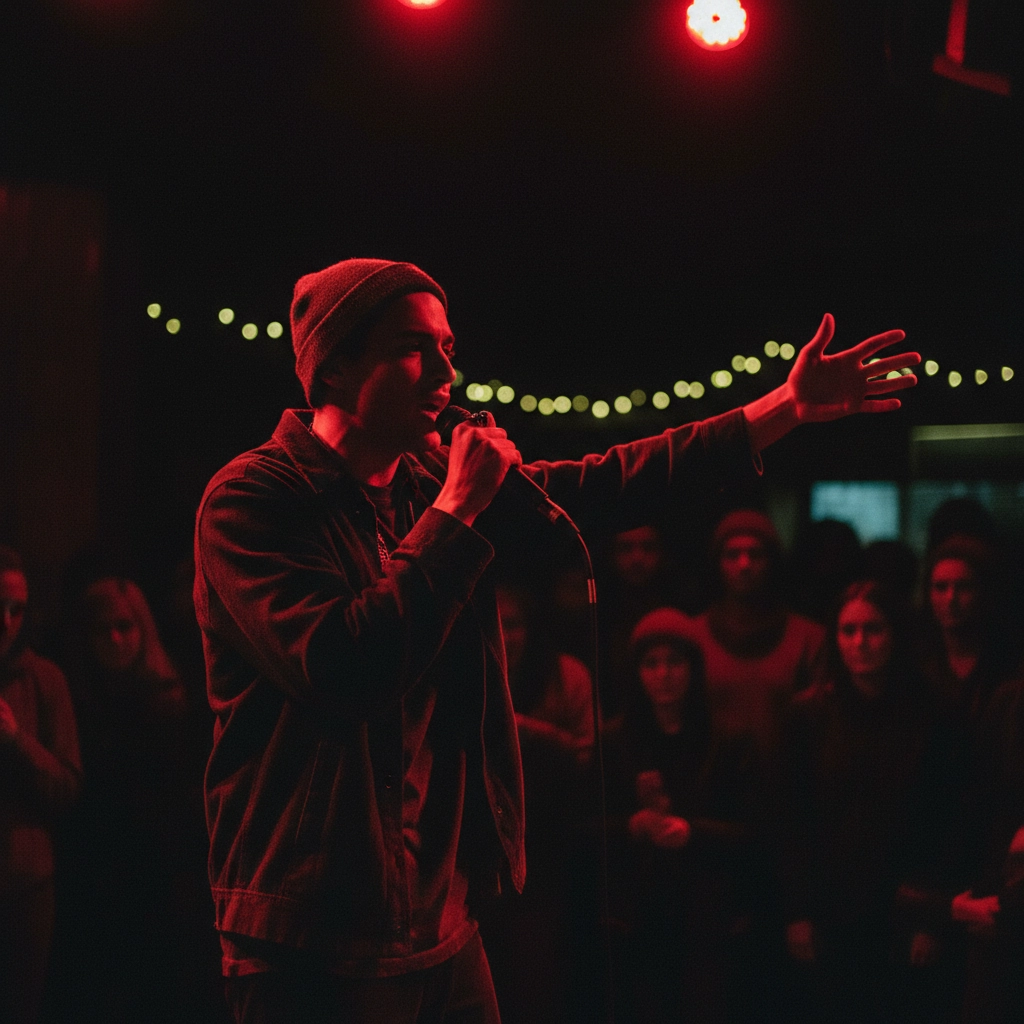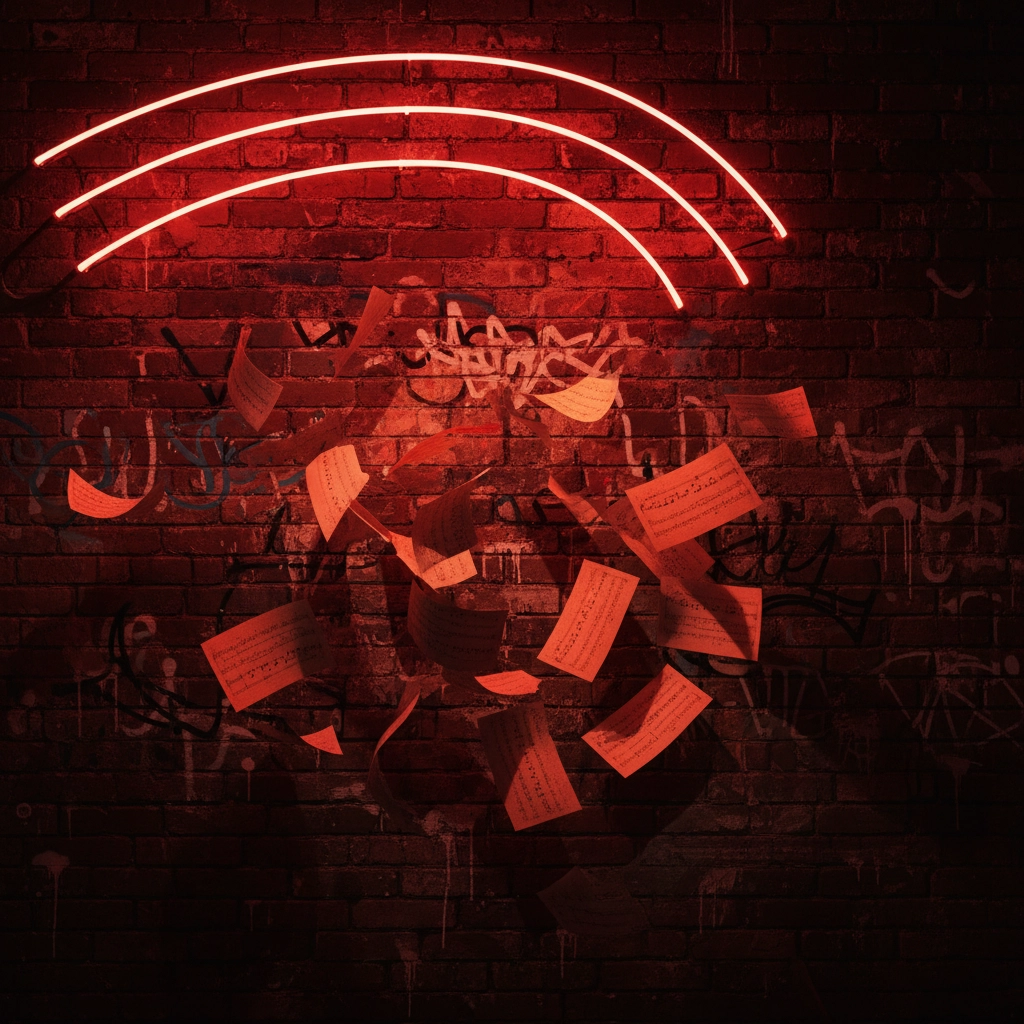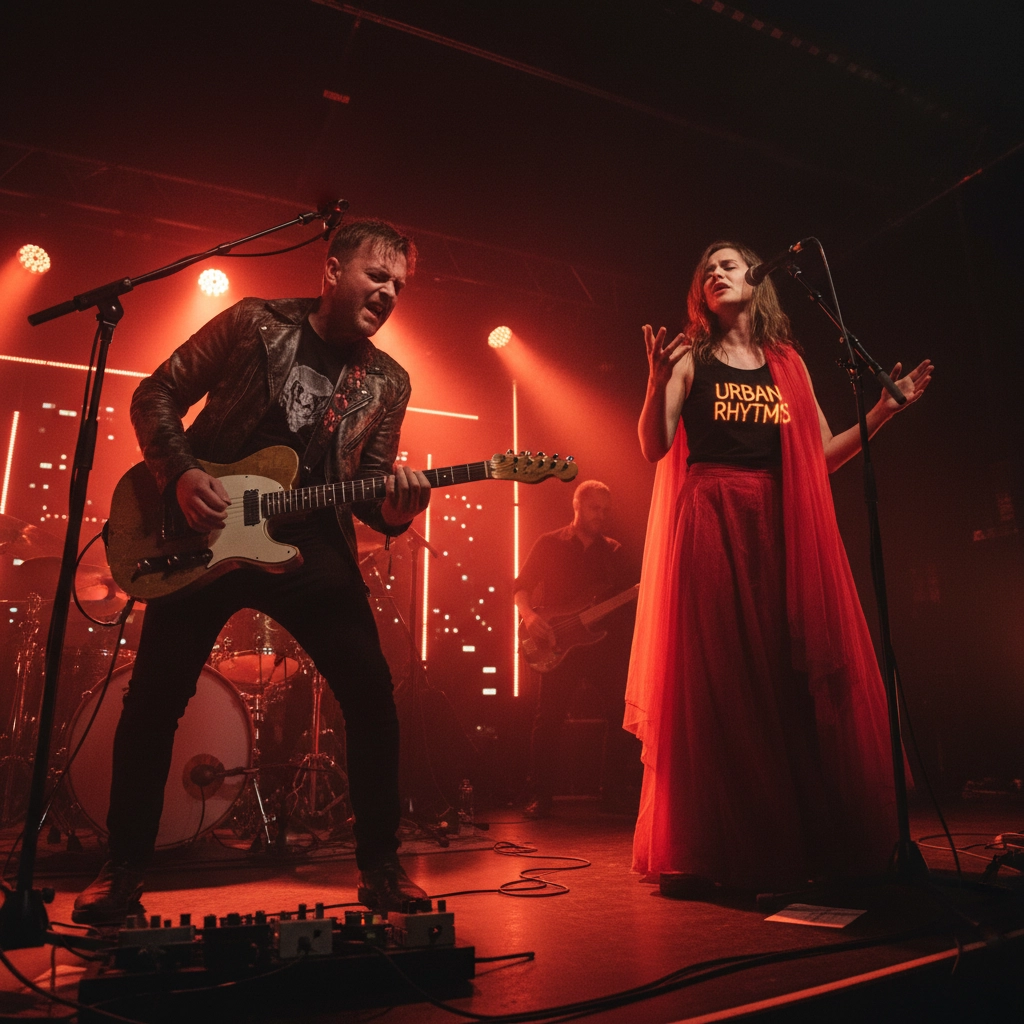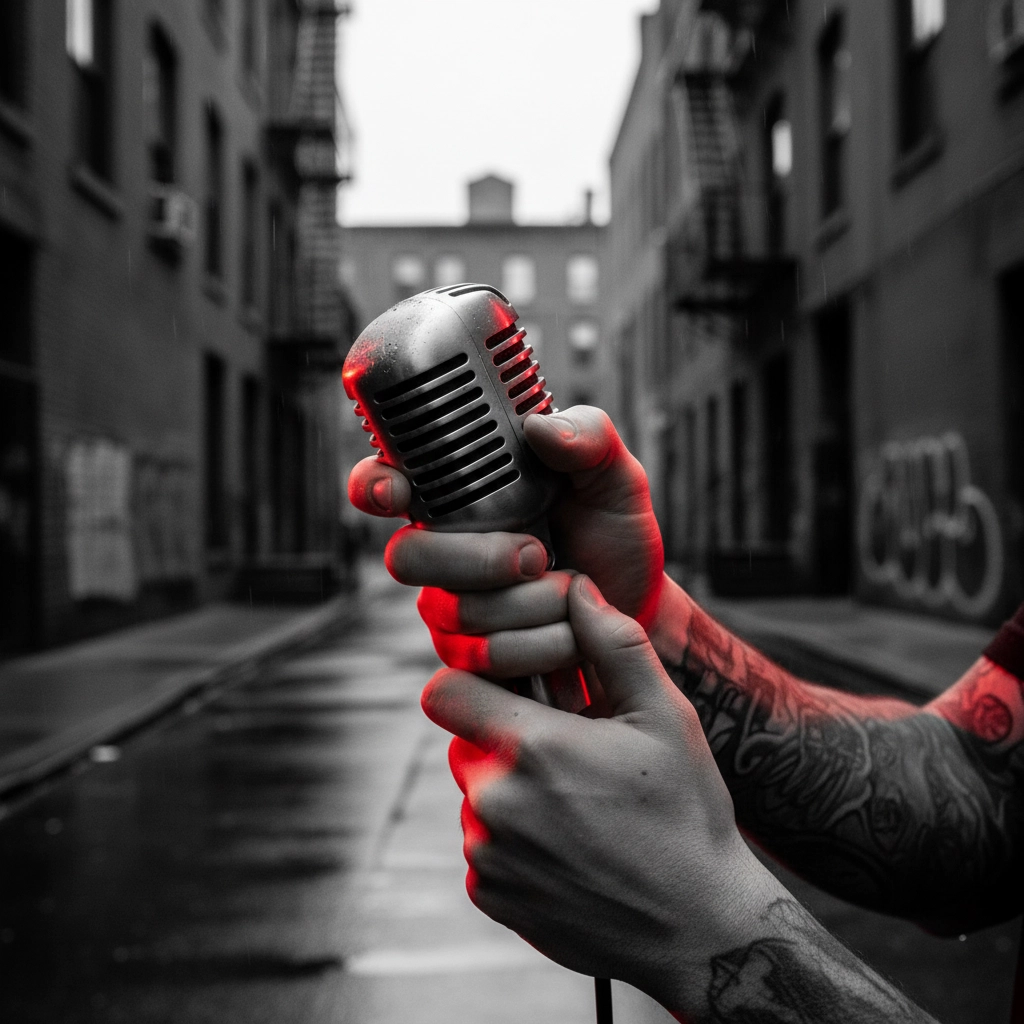Right, let's dive into something that's been close to my heart for years – the beautiful, chaotic, absolutely mind-blowing world of blending poetry with music! I'm beyond excited to share this with you because this isn't just some academic exercise. This is about creating something that'll make audiences stop in their tracks, something that transcends the boundaries of what we think art should be.
Over the years, I've watched countless artists struggle to find their unique voice in a world that's constantly pushing them into neat little boxes. But here's the thing – the most powerful performances I've witnessed have been those genre-bending, soul-shaking moments where poetry and music collide in ways that nobody saw coming. So grab your notebooks, fire up your creativity, and let's embark on this revolutionary journey together!
Step 1: Master Your Poem's Foundation Like Your Life Depends On It
Before you even think about introducing a single musical note, you need to know your poem inside out, upside down, and backwards! I'm talking about understanding every breath, every pause, every emotional crescendo that lives within those words. This isn't about memorisation – this is about complete emotional ownership.
When I first started experimenting with poetry-music fusion, I made the rookie mistake of rushing straight to the melody. Big mistake! Your poem is the beating heart of this entire experience, and if you don't understand its natural rhythm, tone, and pacing, you're building your masterpiece on quicksand.
Read your poem aloud – really perform it – and pay attention to where your voice naturally rises and falls. Notice the places where you instinctively slow down or speed up. These aren't accidents; they're your poem's DNA showing you exactly how it wants to be brought to life musically!

Step 2: Identify Your Core Elements and Make Them Sing
Here's where things get properly exciting! You need to boil your entire poem down into one bite-sized phrase that captures its absolute essence. I know, I know – it sounds impossible when you've poured your heart into every single line. But trust me on this one!
List out the most important metaphors, images, and ideas that feel crucial to your work. These are going to become your anchor points when you start building that musical structure. Look for the lines that hit you right in the chest – those powerful phrases that feel like the end of a thought or the beginning of a revelation. These gems are going to serve as your melodic hooks, the moments that'll have your audience humming along days later.
When I was working on my early pieces, I discovered that the lines I kept coming back to, the ones that gave me goosebumps every time I spoke them, were always the perfect foundation for my musical hooks. Your instincts know what they're doing – listen to them!
Step 3: Restructure for Musical Integration (This Is Where Magic Happens!)
Get ready to completely reimagine your poem! Take those beautiful verses and break them into smaller segments that can dance with musical forms. This might feel a bit scary at first – like you're dismantling something precious – but you're actually giving it wings to fly in ways you never imagined.
Consider adapting your work into a song structure by using your biggest concept as a recurring chorus, while building verses from your supporting imagery and metaphors. This constraint-driven approach isn't about limiting your creativity; it's about channeling it into something absolutely explosive!
I've seen poets transform their most intimate pieces into genre-defying performances by embracing this restructuring process. It's not about copying existing formats – it's about creating something entirely original that respects both your poetic vision and the power of musical storytelling.

Step 4: Master the Art of Syllabic Emphasis and Prosody
This step is absolutely crucial, and it's where many artists stumble! Pay obsessive attention to which syllables are being emphasized in your poem. When you set words to melody, you need to ensure that emphasized words fall on the beats that receive similar emphasis in your music.
Think about it this way – if you're holding out a note for an extended time, that should correspond to a word that naturally receives emphasis when spoken. This relationship between spoken rhythm and musical meter is called prosody, and mastering it is what separates the amateurs from the artists who leave audiences speechless.
I remember spending hours perfecting this balance in my early work, and let me tell you – when you get it right, when that natural speech pattern flows seamlessly with your musical choices, it creates an almost hypnotic effect that pulls listeners deeper into your artistic world.
Step 5: Experiment with Cross-Form Techniques (Break All the Rules!)
Now we're getting into the really revolutionary stuff! Start exploring combinations of structured poetic forms like sonnets or ballads with free verse or experimental musical techniques. Don't be afraid to integrate different cultural traditions – blend poetic styles from various languages and cultures into a single, cohesive musical work.
Consider using hybrid approaches that merge traditional elements with contemporary themes. Imagine setting archaic language within modern musical contexts, or taking contemporary street poetry and weaving it through classical musical structures. The possibilities are absolutely endless, and the results can be nothing short of revolutionary!
I've witnessed performers combine rigid formalism with completely unexpected musical constraints, creating experiences that challenge both the artist and the audience in the most beautiful ways possible. This is where your unique voice starts to emerge – in those brave spaces between established genres.

Step 6: Develop Collaborative Partnerships That Elevate Everyone
Here's something I cannot stress enough – work with composers and musicians who share your vision for pushing boundaries! The goal isn't to simply use poems as song lyrics; it's to explore innovative combinations that create something entirely new.
This collaborative approach allows poets and musicians to combine their crafts in ways that emphasize and utilize each other's more physical and vocal qualities. When you find the right creative partners, you'll discover that the whole becomes infinitely greater than the sum of its parts.
I've been incredibly fortunate to work with musicians who understand that we're not just adding music to poetry or poetry to music – we're creating a third thing entirely, something that goes far beyond what either textual poetry or music could achieve alone. These partnerships have pushed my work into territories I never could have explored on my own.
Step 7: Refine Through Performance Until It's Absolutely Electric
The final step is where your creation truly comes alive – in performance! Embrace the stage with everything you've got. Develop your presence, your connection with the audience, and your ability to make every person in that room feel like you're speaking directly to them.
Practice until you can perform without scripts, allowing your eyes, your gestures, and your entire being to engage directly with listeners while the music supports and enhances your poetic delivery. This isn't just about memorization – it's about becoming so connected to your piece that it flows through you naturally.
Remember, this fusion approach isn't experimental for the sake of being experimental. It's a deliberate act of synthesis, where poetry is reconstructed through layered musical influences to create something that's uniquely yours.

Ready to Transform Your Art? Here's How to Get Started!
The ultimate goal of everything we've discussed is to create something entirely original that draws from both poetic and musical traditions while transcending the limitations of either medium alone. Whether you're merging rigid formalism with new musical constraints or challenging expression through creative juxtaposition, focus on synthesis rather than mere combination.
Your next steps:
- Start with one poem that moves you deeply
- Record yourself reading it naturally multiple times
- Identify the emotional peaks and valleys
- Reach out to local musicians who share your experimental spirit
- Book yourself into open mic nights to test your creations
The poetry-music fusion scene is absolutely thriving right now, and there's never been a better time to dive in! Whether you're a seasoned poet looking to expand your horizons or a musician wanting to add lyrical depth to your compositions, these techniques will help you create performances that audiences will never forget.
Pop down to D3 Creations to explore more boundary-pushing artistic content, and remember – the only way to truly master this craft is to get out there and start performing. Your unique voice is waiting to be discovered, and I cannot wait to hear what you create!

